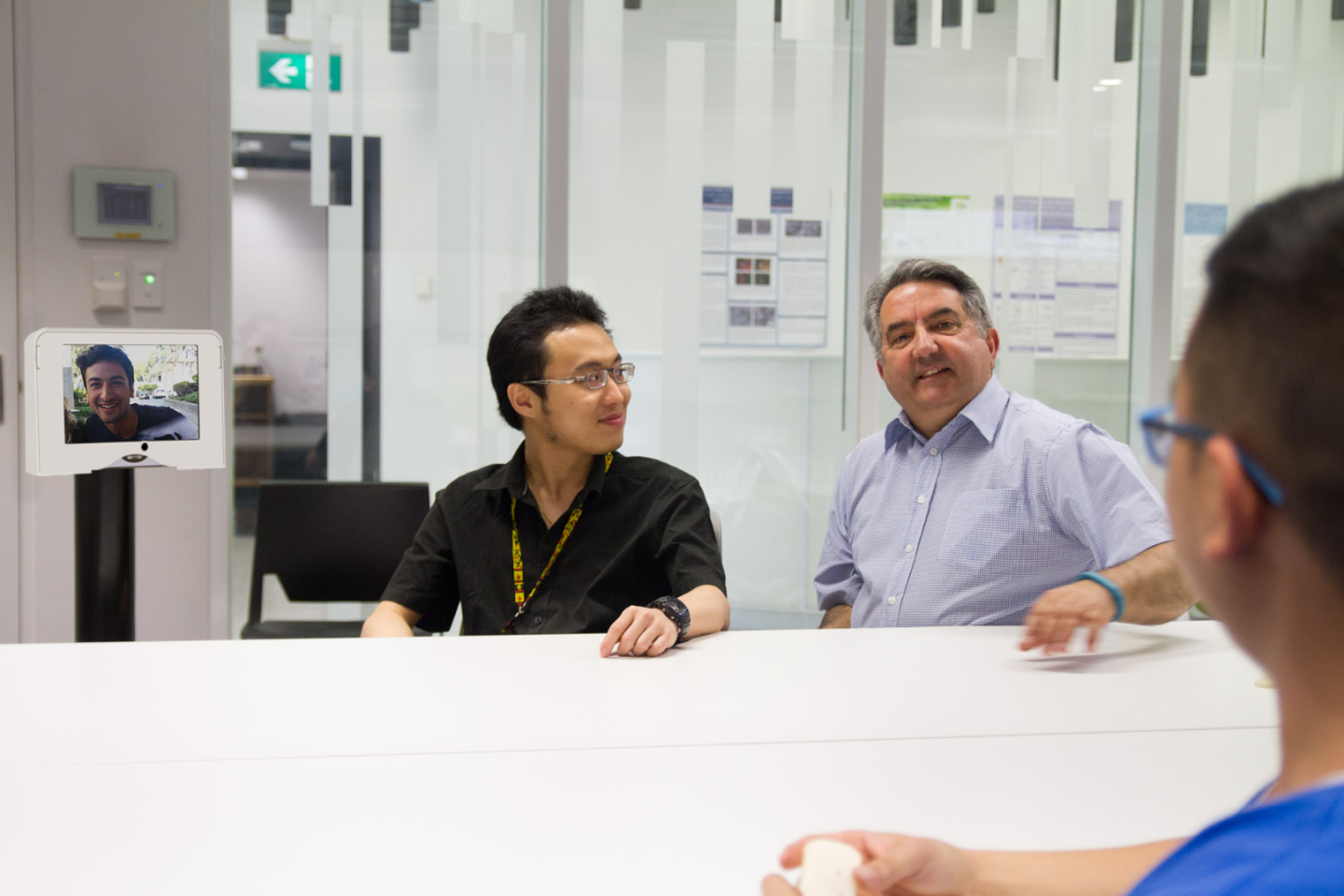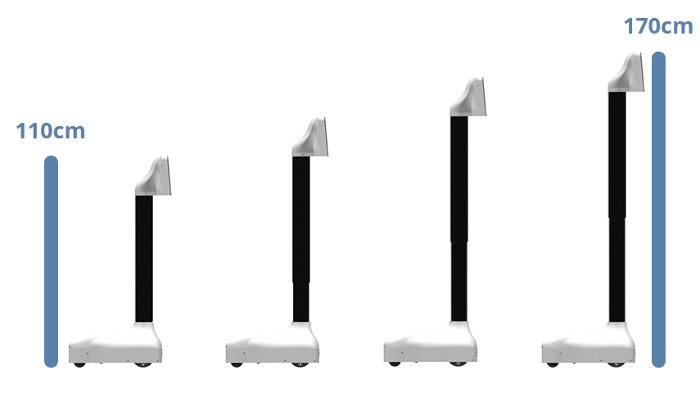For those with severe motor disabilities, mind-controlled prostheses have long offered a sliver of hope that they might one day be able to regain some semblance of autonomy. While we've seen numerous examples of such prostheses over the years, most involve brain surgery and are still not ready for commercialization. As scientists continue to tinker with neuro circuits, Melbourne-based startup Aubot has skipped past all these complications to launch the Teleport, the world's first commercially available telepresence robot that can be controlled by thought.
The idea behind Teleport, is simple enough: to allow people to be in two places at once, as is the case with other telepresence devices. While there are numerous corporate and industrial settings in which it can be employed (Aubot's biggest customers at the moment are corporate companies and museums), some of its most interesting uses lie in the elderly and healthcare sectors.

While studies on mind-controlled telepresence robots have been conducted in the past, what makes the Teleport intriguing is its simplicity. Forget brain surgery, complicated training programs or insurance legalese. All users need is the MindWave, an off-the-shelf brain control interface that costs less than US$100, and they can get the Teleport up and running in just five minutes. Anthony Bartl, a 36-year-old quadriplegic who test drove the robot with the brain-control device, describes the experience as a "real thrill."
"I could go through a museum in America, or wherever; see polar bears in the Arctic," says Bartl, who has been paralyzed from the neck down after being hit by a truck when he was six. "I never really got anything to move before with my brain so that was pretty unbelievable in that sense."

To move the robot using the MindWave, the user simply needs to get their concentration level to pass a given threshold. Eye blinking and concentration then control the robot's movements. "If you're already in 'left' mode, and you're thinking above the 70 percent threshold for a long period of time, then the robot will spin continuously," Aubot founder Marita Cheng told New Atlas, by way of example. Multiple eye blinks stop the robot, while double blinks change its direction. In the video below, Bartl employs a stick in his mouth to stop the robot with a press of the space bar in case his blinking didn't get the job done.
What is going to take this robot to the next level for people like Bartl is a development that the company is currently working on – integrating it with a robotic arm that would no doubt make vast improvements in a disabled user's quality of life.
"Someone with a disability could use it to walk ahead of them to open doors, grab drinks out of the fridge, and feed themselves at the dinner table," suggests Cheng, who is no stranger to building robotic arms or coming up with tech solutions to help the disabled. After all, her first product was a prosthesis called Jeva and the former Young Australian of the Year is also co-founder of Aipoly, an image-recognition app that helps the visually impaired recognize their surroundings.

In the case of hospitalized patients, the Teleport also offers them a window to the outside world. The company is currently working with Australian cancer support organization CanTeen to enable hospitalized children with cancer to attend school. In the past, they would have had to be satisfied with after-school visits from their friends but now they can keep up with what's happening in the classroom remotely.
"We imagine that we will set up a buddy system where each Teleport gets paired with a couple of students from the school," Cheng tells New Atlas. "And those students take turns to make sure the Teleport (that is being navigated by their friend in hospital) is okay, and able to get to where it wants to go."
Remote companion
In an age where extended families are becoming a rarity, the Teleport enables people living in different geographic regions to stay involved in each other's lives. A phone call or Skype session would be dependent on the other person picking up and would offer only a static view of the background. Because the robot can be controlled remotely, families could place it in a grandparent's home and even follow them around as they go about their day without being restricted to any one area while having a conversation (as seen in this video of an earlier iteration of the robot).
The robot features a touchscreen tablet mounted on a retractable pole, which can be toggled between a height of 1.1 and 1.7 meters. Ultrasonic sensors are mounted on its base to prevent collisions while a wide angle lens offers a greater field of view. It can be controlled via a computer's web browser or an Android phone, and stowed in the backseat of a car.

Apart from the robotic arm attachment, the company is also working on expanding the robot's range of add-ons to increase its functionality. "We're building different editions to this robot, where you can take bits of it off, like the tablet for example, and replace it with a virtual reality or navigational head so people don't need to buy an entirely new robot if they want more functionality. They can just buy a new robot head," she says.
At present, the Teleport retails for AUD$3,800 and is sold only in Australia. The MindWave needs to be bought separately and is only necessary for individuals who don't have use of their hands. That said, the company will be opening an office in California later this year to handle North American sales.

Check out the video below to see how Bartl controlled the Teleport with his brain:
Source: Aubot










